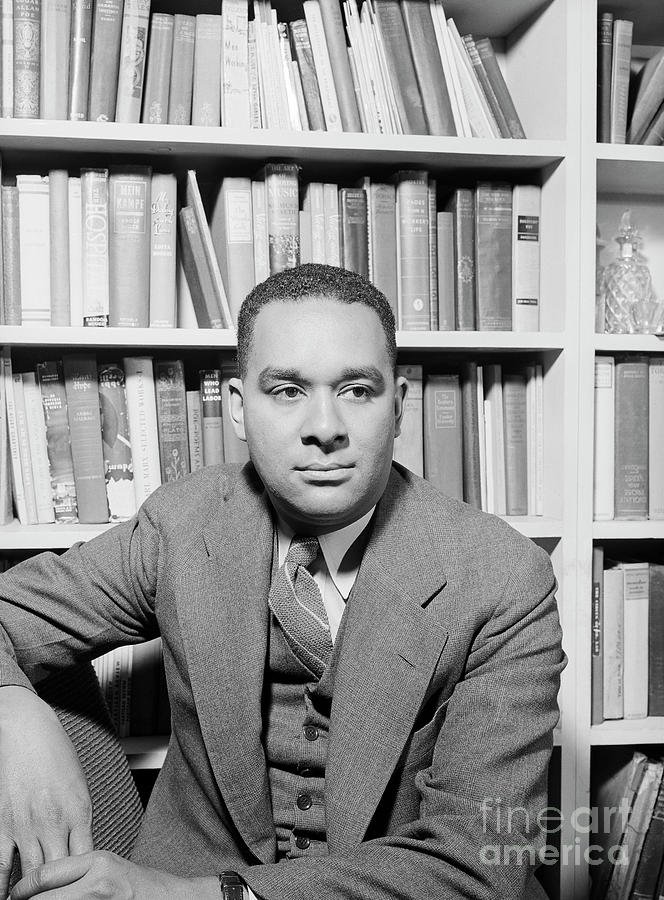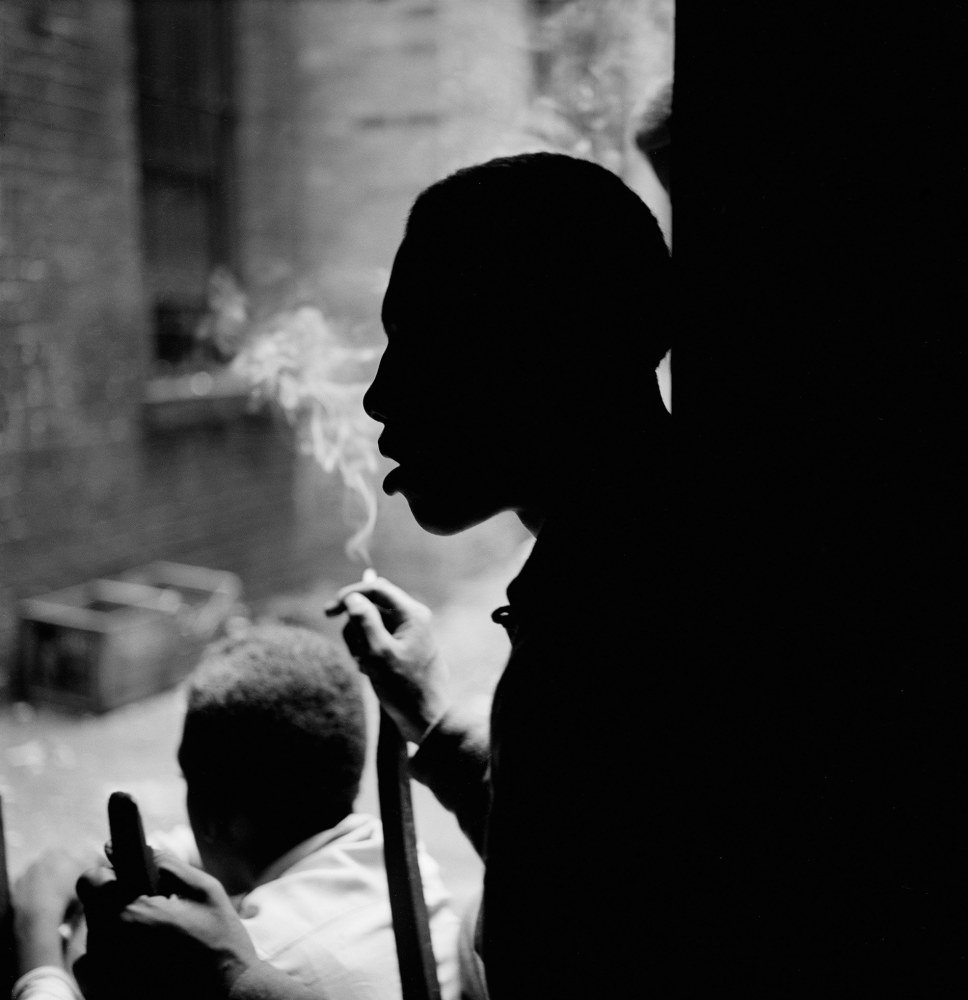Gordon Parks, Self-Portrait, 1941, gelatin silver print, 50.8 × 40.64 cm (20 × 16 in.), Private Collection. Courtesy of and copyright The Gordon Parks Foundation
“A photographer can be a storyteller. Images of experience captured on film, when put together like words, can weave tales of feeling and emotion as bold as literature.… [Photographers] bring together fact and fiction, experience, imagination, and feelings in a visual dialogue that has enormous impact on how we observe and relate to the external world and our internal selves.” —Philip Brookman, “Unlocked Doors: Gordon Parks at the Crossroads,” Gordon Parks: Half Past Autumn, 1997
In an interview with photographer David Hoffman, he says, “I felt the need to expose something that I thought was being hidden. It’s not courage, it’s a need to get people aware of how people suffer.”
Gordon Parks (1912–2006) was a multi-talented individual who excelled in various fields. He had a successful career as a photographer, filmmaker, writer, musician/composer, and painter. His extraordinary work took him from Hollywood to the forefront of the Civil Rights Movement.
Parks grew up in Fort Scott, Kansas, and later moved to St. Paul, Minnesota, where he taught himself photography and landed his first professional job shooting fashion for a department store. In 1940, he moved to Chicago and had a portrait studio at the South Side Community Art Center which was documenting the nation’s social conditions under the New Deal. Two years later, he began working for the Farm Security Administration (FSA), which was documenting the nation’s social conditions under the New Deal. At the same time, he started his career as a freelancer for Glamour and Ebony magazines. In 1948, he broke the barrier by becoming the first Black staff photographer at Life magazine. He developed and captured fashion spreads for Vogue and made history as the first African American to direct a major motion picture with his 1969 film, The Learning Tree. This movie was adapted from his own novel and he co-composed its musical score. His next film, the 1971 thriller Shaft, featuring Richard Roundtree, was a huge success that spawned the popular "blaxploitation" genre. Additionally, it produced an equally famous theme song by Isaac Hayes. However, there is more to it than just that: Parks is best known for creating some of the most impactful photographs of the 20th century.
Parks was a renowned photographer who excelled in capturing subjects from the worlds of sports, politics, entertainment, and everyday life during his assignments. However, his passion for social justice was his most prominent trait. He used his camera as a weapon to fight against poverty and racism.
American Gothic. Portrait of government cleaning woman Ella Watson.
Washington, D.C. Mrs. Ella Watson, a government charwoman, with three grandchildren and her adopted daughter
In 1941, Parks received a fellowship from the Julius Rosenwald Foundation. The foundation’s president, Dr. Edwin Rogers Embree, was writing a book on exceptional African Americans and gave Parks a list of 13 distinguished Black Americans to photograph. Embree's book, 13 Against the Odds, was published in 1944. One of the individuals on the list was Richard Wright, who was known for his novels and short stories about the plight of African Americans in the mid-twentieth century. In 1943, Parks met Wright in Harlem, bringing with him a copy of 12 Million Black Voices, a book that combined images by Farm Security Administration photographers such as Dorothea Lange and Walker Evans with Wright's work. The author inscribed the book for Parks, citing one of the photographer's favorite passages: "To one who moves with the new tide."
Richard Wright Photograph by Gordon Parks
During the months bridging 1943 and 1944, Parks took an array of photographs in Harlem. He often approached his subjects from below, using the buildings that framed their lives as backgrounds and attempting to catch people looking askance in ways that suggest resilience. Along with a striking portrait of Wright, Parks captured several other notable images.
In New York state, America had several camps such as Camp Christmas Seals in Haverstraw, Ellen Marvin and Gaylord White Camp in Arden, Camp Nathan Hale in Southfields, and Camp Brooklyn in Tusten. These camps were remarkable for the era as they were racially integrated and espoused egalitarian ideals. Parks’s photographs beautifully showcase the children of different races playing, praying, eating, and raising the American flag together, which was a bold social experiment in action.
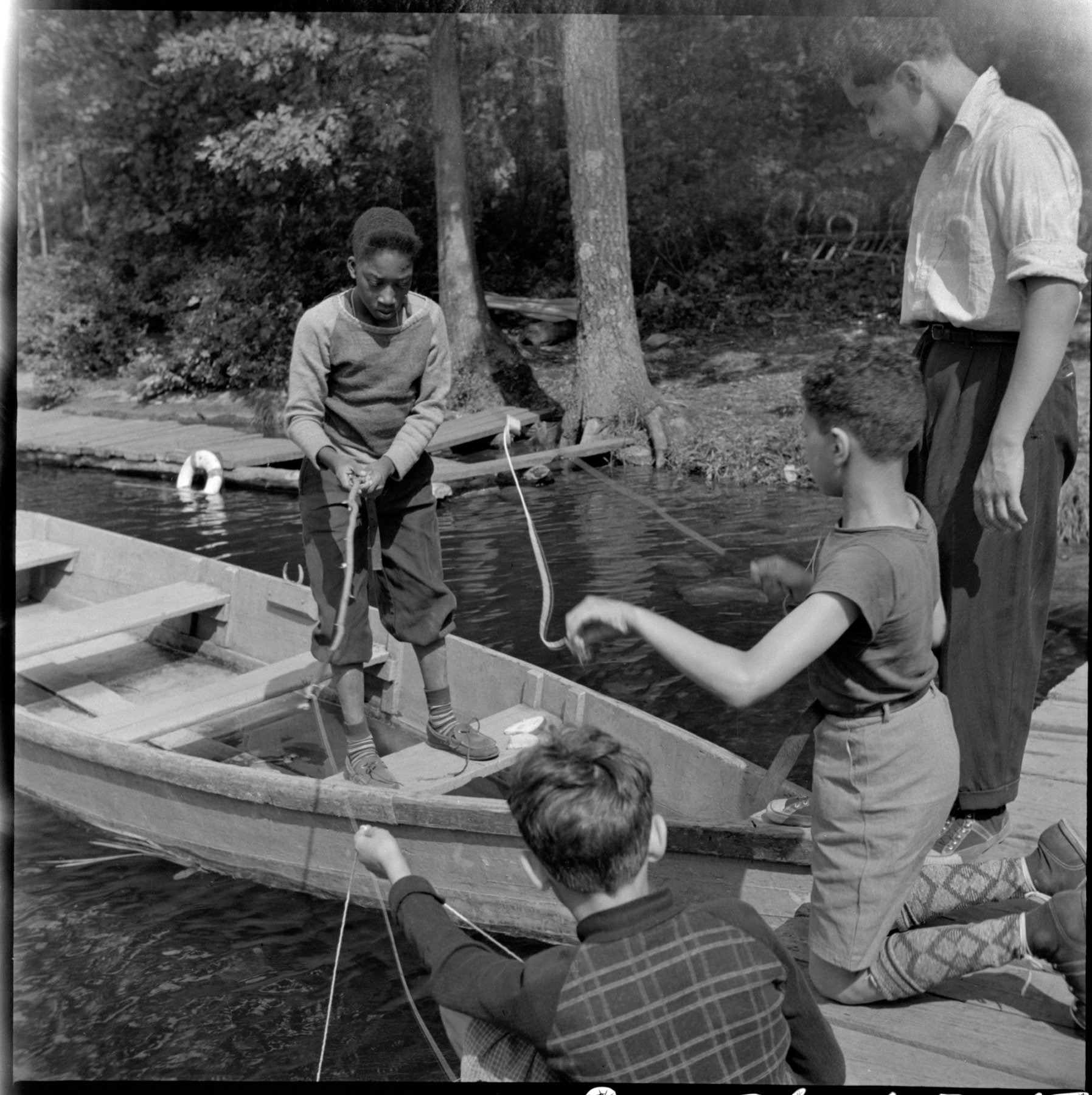
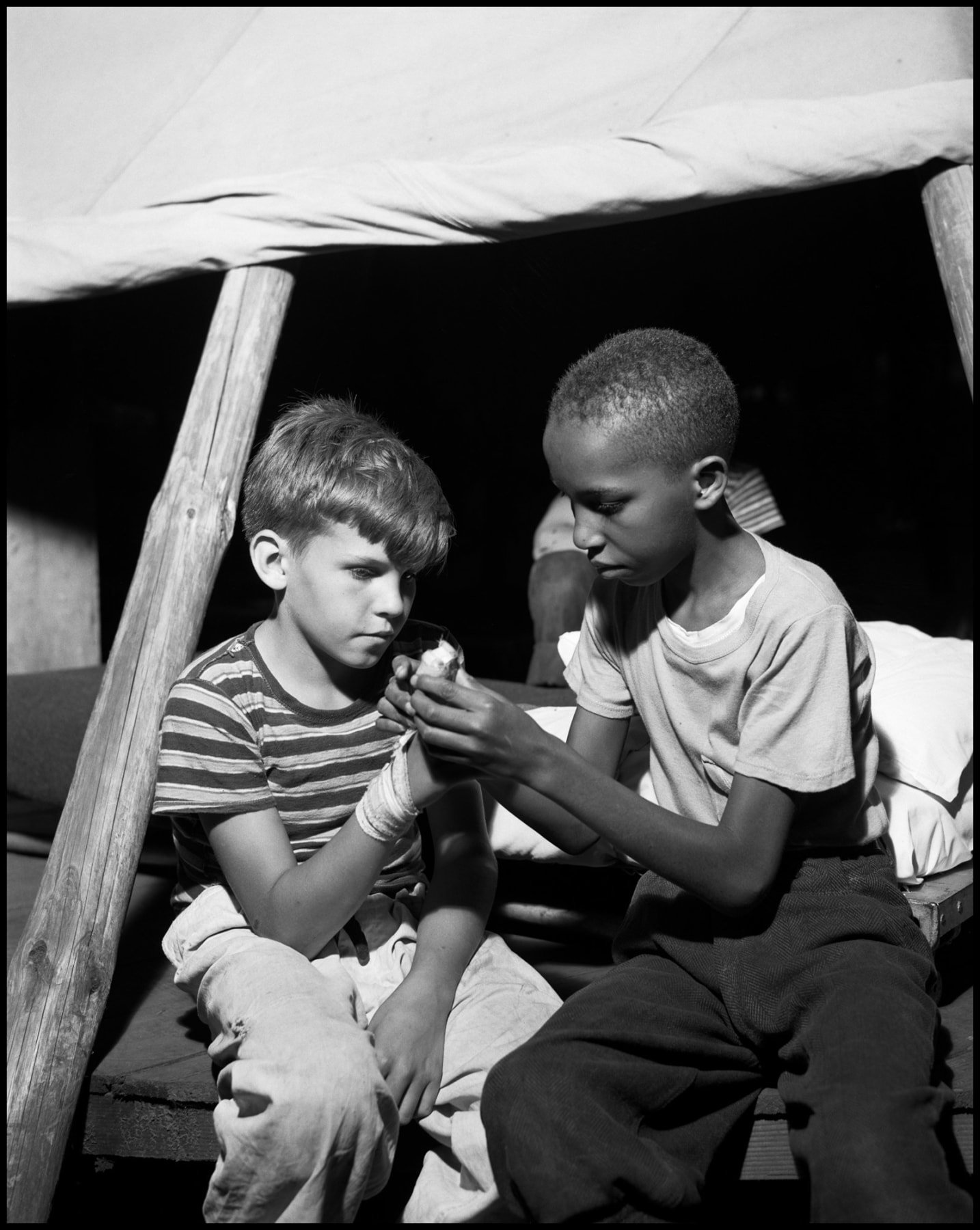

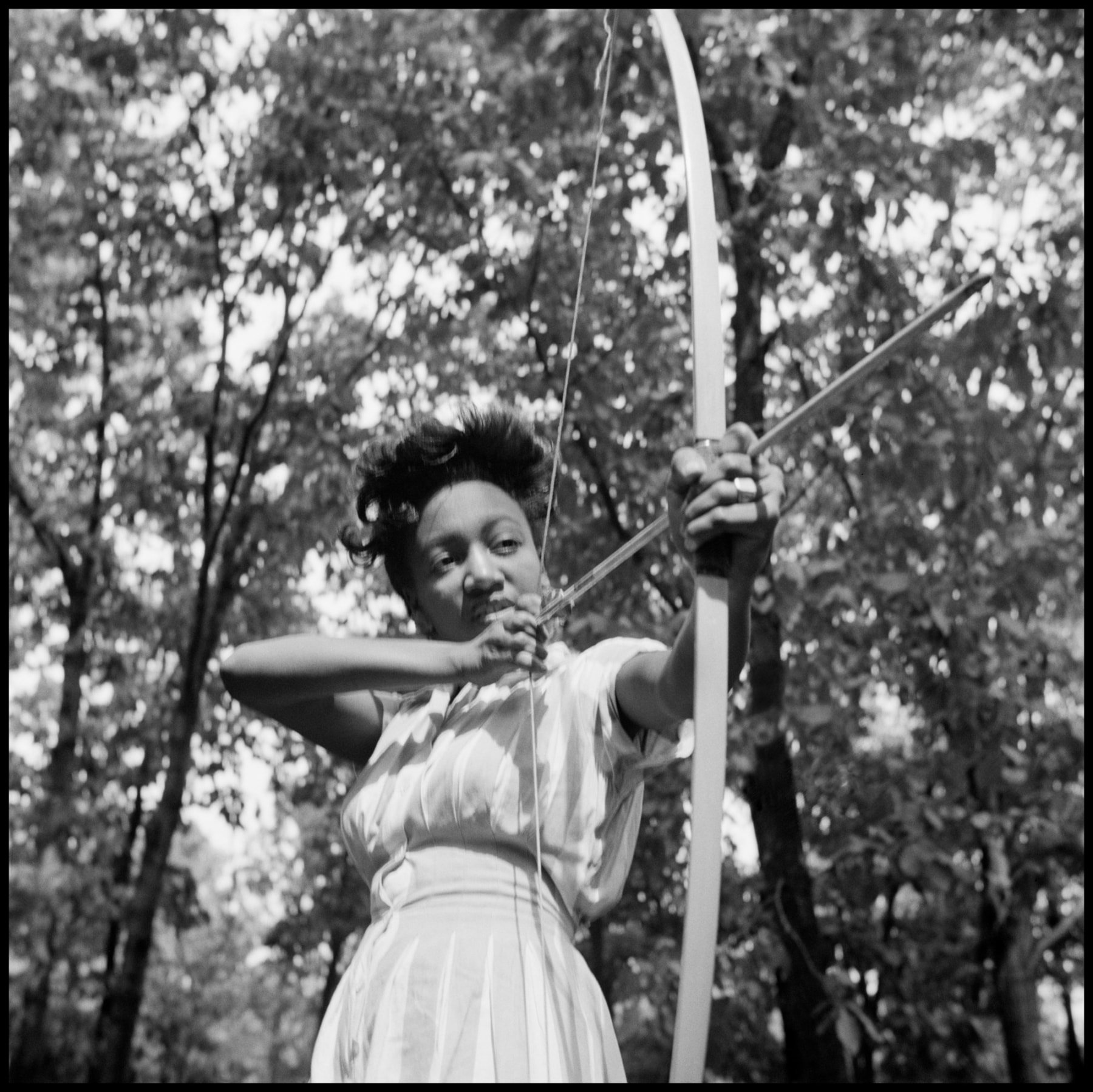
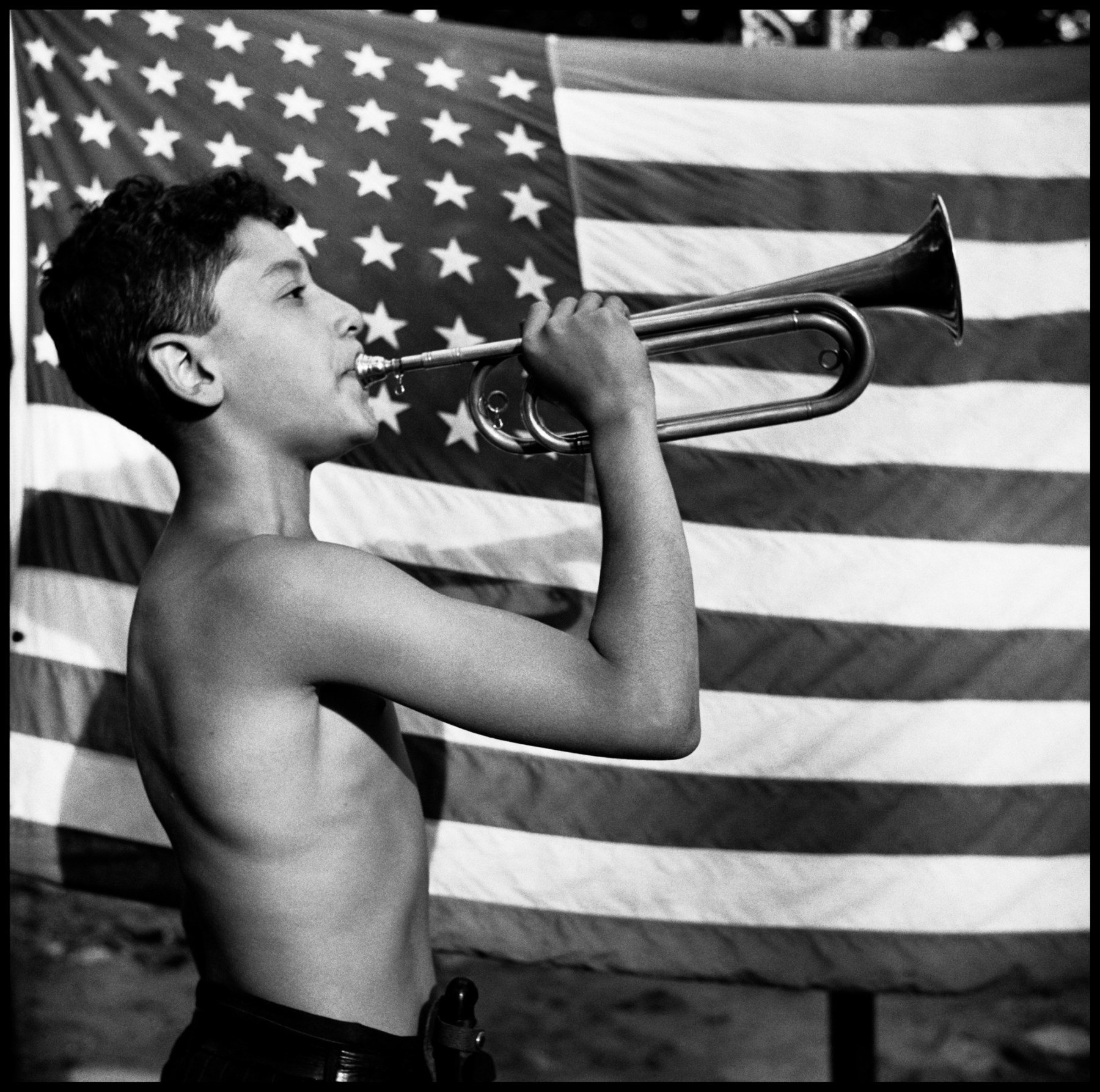

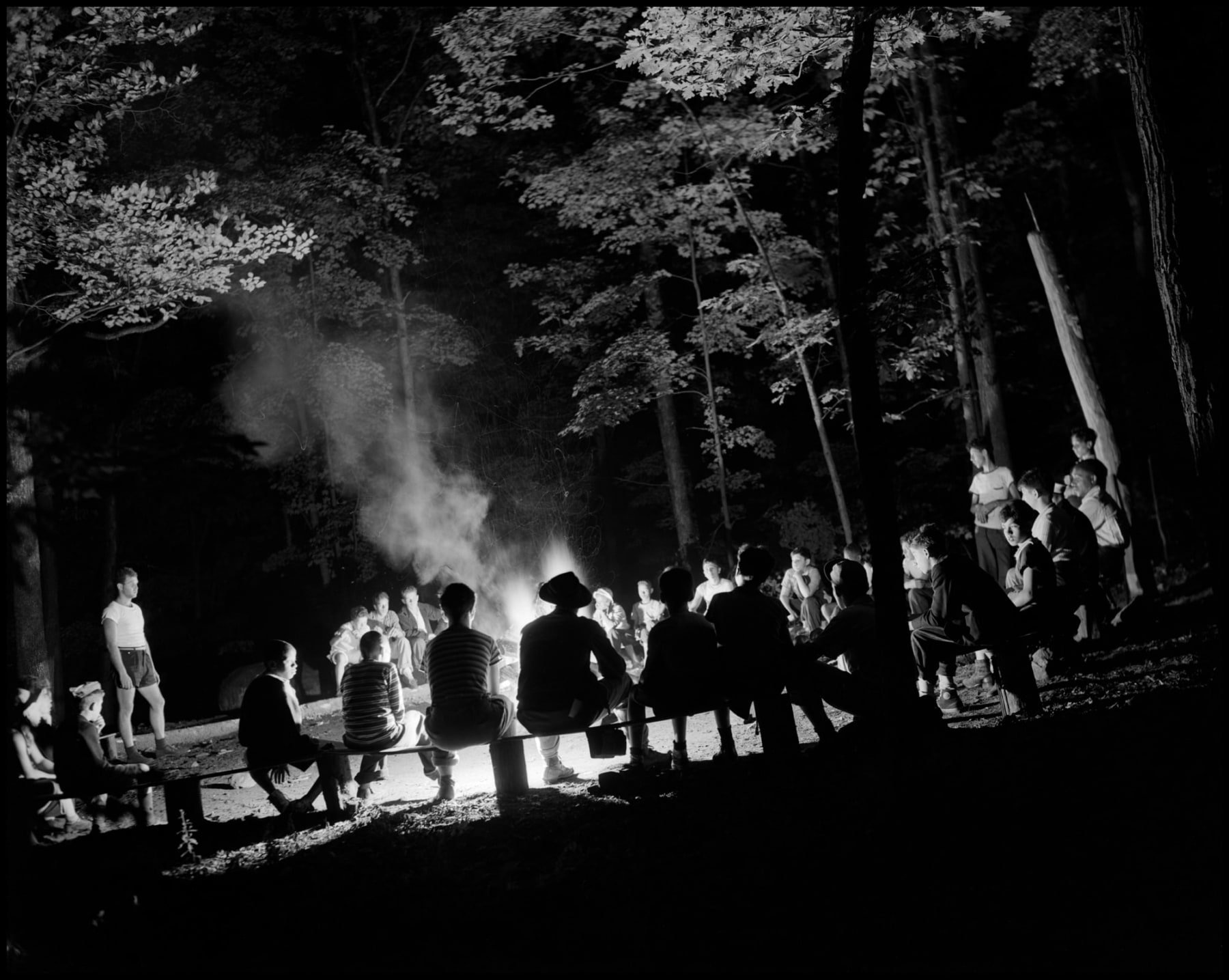
Gordon Parks, Washington, D.C. Three children waiting in the kitchen while their mother prepares the evening meal. June 1942, made while working for the Farm Security Administration (FSA), a government agency.
Football, Bethune-Cookman College, Daytona Beach, Florida, 1943
Duke Ellington in Concert, New York, 1960
Untitled, Chicago, 1957
A remarkable essay by Parks titled "The Atmosphere of Crime" was published by Steidl in 1957.
Along with reporter Robert Wallace, Parks traveled across the US for six weeks, following the police during their operations, visiting incarceration centers and even a death chamber to portray criminality. Parks rejected the dominating crime narrative and used his camera to advocate for the socially and politically ostracized. This book beautifully prints Park's photographs as plates and includes the original Life article (including text and advertising) as well as long essays by curators and a public interest lawyer, providing thorough context. Given the current wave of protest calling for racial justice, the book allows us to gain perspective on Parks' nuanced documentation and how his images were used in 1950s America.
Parks' photographs aimed to counter the stereotypical representation of violence that portrayed black people as members of gangs and drug users being condemned by good-willed white police officers.
Raiding Detectives, Chicago, Illinois, 1957 © Courtesy The Gordon Parks Foundation
New York, NY, 1957 © Courtesy The Gordon Parks Foundation
In 1968, Life published "A Harlem Family" by Parks. The article featured photos and commentary on the Fontenelle family's living conditions in a crumbling apartment on 127th street, New York.
Parks' reportage revealed the bleakness of their situation, with the family's modest hopes, the potential for only one child to succeed, and even violence between spouses due to built-up hatred. However, Parks also showed the family's full range of emotions and their struggle to keep faith in such a life.
This provided an intimate view of a neighborhood and a nation amidst the turbulent civil unrest of the United States at the time. The empathy that Parks' photos provoked was so sincere that readers donated money for the Fontanelle family to move into a modest house in Queens.
This exhibition delves into the story behind a groundbreaking photo essay by Gordon Parks, and the extraordinary chain of events that ensued. The essay “Freedom’s Fearful Foe: Poverty,” was published in Life magazine in June 1961. It profiled the da Silva family, who lived in a hillside favela near a wealthy Rio de Janeiro, Brazil enclave. The essay focused on Flávio, the eldest son and a resourceful twelve-year-old with crippling asthma. The story struck a chord with readers, eliciting thousands of letters and nearly USD 30,000 in donations (equivalent to over $250,000 today). In response, Life magazine launched an ambitious “rescue” effort, which involved relocating the family to a new home, moving Flávio to a hospital in the United States, and administering funds to support the rehabilitation of the favela. Meanwhile, in Brazil, the photo essay sparked a great controversy in the press. "The Flávio Story" provides an in-depth look at Parks' most acclaimed photo essay within the context of Cold War politics in the United States and Brazil and at the inner workings and cultural impact of Life magazine.
Gordon Parks: The Flávio Story was on view at the Ryerson Image Centre from September 12 – December 9, 2018. Paul Roth and Amanda Maddox curated the exhibition.
Written By: Ben Cosgrove
Gordon Parks was a master of contradictions. His fashion photography captured the beauty and opulence of the 1940s and ’50s elite with carefully orchestrated framing and composition. But Parks was also renowned for his stirring images of poverty and racial discrimination.



